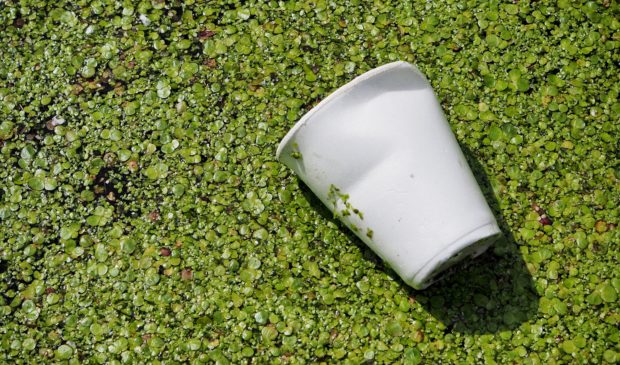Watershed Protection delivers long-awaited report on trash in creeks
Tuesday, September 27, 2022 by
Nina Hernandez The Environmental Commission heard a long-awaited presentation on trash in Austin creeks at its meeting last week.
Two years ago, in response to a City Council direction, the Watershed Protection Department launched a comprehensive study on trash, including dockless mobility devices, and other contaminant buildup in city waterways.
The Watershed Protection Department’s Applied Watershed Research group conducted the study, looking at 20 creeks and 110 total miles over the past two years. The result is the Trash in Creeks Field Investigation Report.
As Andrew Clamann explained, his group was tasked with mapping the litter problem, assessing the severity and identifying potential solutions. The group also conducted a benchmark study to compare Austin’s problem and potential solutions with other cities’ outcomes.
The field report includes a set of recommendations such as site-specific cleanups, improved dumpster rules, structural controls, enforcement, education and outreach, and coordination with local partners.
One advantage of the project is that, from now on, the department will have the ability to replicate the study and compare the maps over time. With that information, Council will be able to assess whether the problem is getting better or worse.
Clamann, an environmental scientist, said he saw things during the course of the study that he’d never seen in his nearly 20 years on the job.
“I’ve seen trash. I didn’t think I was going to be surprised at anything, but I had my eyelids blown off at some of the things I saw,” Clamann said. “We need to get out in these creeks and walk these areas that don’t get seen very much because there’s a lot of hidden stuff out there.”
Virtually anything in existence that would be thrown away in the city can wind up in the creeks, but a large proportion of the trash is single-use plastic.
At Council’s direction, the research group paid particular attention to electric scooters during its canvassing. Canvassers found just 21 scooters during the entire study – a number Clamann said is reasonable given the area covered. Furthermore, the scooters that were found were concentrated in the downtown area, which makes them easier to retrieve. The group reported each scooter either to the Austin Transportation Department or to the vendor, and all but a few (which were followed up on) were removed.
“ATD takes it really seriously,” Clamann said. “So I don’t think the scooters in the creeks are as much of a problem as people feared two years ago. I think we’ve got a good handle on that.”
In order to pinpoint the biggest sources of the problem, the group created a trash intensity rubric based on volume and used it to evaluate a list of potential sources, including overflowing dumpster, outfall/tributary, encampment, dumping historic site, dumping point source, dumping unknown, and property management.
The team also found more than 500 shopping carts, including some that were decades old.
“Encampment is a source,” Clamann said. “It’s just not necessarily the most intense. And it’s very similar to the other sources.”
The study also found that trash intensity is not proportional to its drainage area; in other words, trash buildup isn’t necessarily worse downstream. “Some watersheds actually increase in trash as you go downstream; some watersheds decrease in trash as you go downstream,” Clemann said.
A key takeaway from the report is that the group found no statistically significant correlations between trash intensity and land use, census, transportation or parks.
“It’s not any one place; it is a community problem,” Clemann said. “This is a community-created problem and it’s going to have to be a community-created solution as well.”
Clemann highlighted the fact that 76 percent of the trash was found in just 10 percent of the total area canvassed. That points to severe hot spots that can be addressed before storms arrive and wash the trash into the creek system.
Some of the remedies explored include extraction, interception and source reduction. Extraction, the most expensive option, involves physically removing trash from the waterways. Interception strategies keep trash from entering waterways in the first place, and source reduction requires limiting the flow of specific goods, such as single-use plastic, into the community.
Clemann said the department is still exploring which strategies will work best for Austin.
The Austin Monitor’s work is made possible by donations from the community. Though our reporting covers donors from time to time, we are careful to keep business and editorial efforts separate while maintaining transparency. A complete list of donors is available here, and our code of ethics is explained here.
You're a community leader
And we’re honored you look to us for serious, in-depth news. You know a strong community needs local and dedicated watchdog reporting. We’re here for you and that won’t change. Now will you take the powerful next step and support our nonprofit news organization?



